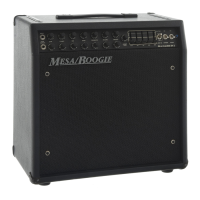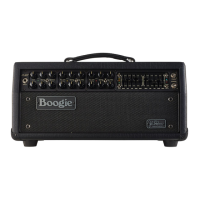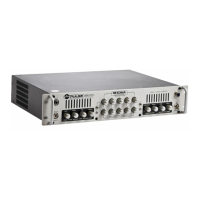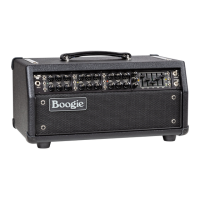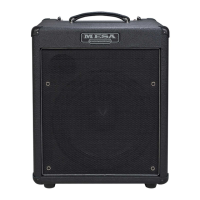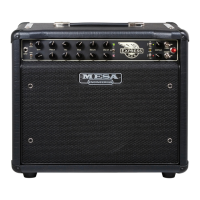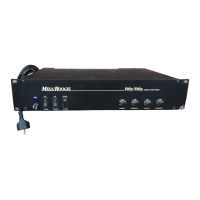- 3 -
You will notice a difference in the taper of the two volume controls. This is an intended difference
and proves to be an integral part of the Quads versatility. Channel 1's Volume is much like that of
the Mark III. Very smooth, responsive and dynamic. The sweet spot is usually found somewhere
between 6 and 7½. Somewhere here, you'll find the ultimate shimmering warmth in your clean
sound and yet, send enough gain to your lead mode to keep it tight and singing. We've found 6¾ -
7 to be the norm. This set-up works well for a player who wants a great clean sound, and still be
able to switch to a great lead sound. Players who put the emphasis on the ultimate clean sound
will probably want to set the volume at 5½ - 6. If you never use clean sounds or don't need
"squeaky" clean rhythm sounds you'll probably be more concerned with Lead 1. In this case a
Volume setting of 7½ - 8½ would be in order.
Channel 2's volume control has a much different taper altogether. It starts out smooth and gentle.
Right around 7-8 it starts to unleash all its mighty gain. Between 8-10 is an explosive zone of tone.
Up here Rhythm 2 becomes a truly usable Metal Rhythm sound, grinding and huge. This in turn
provides enough gain to push Lead 2 into an insane frenzy yet still, tight and vocal sounding.
Lower settings on Channel 2's Volume control enable this mode to be used for a second clean
rhythm sound. This becomes very useful for a song with a clean chording sound and a clean
single note line at a different volume level. Keep in mind this type of setting will reduce gain to the
lead mode and you'll probably want to run the Lead drive slightly higher as a result.
We encourage you to experiment with these Volume control settings. The more familiar with this
control and its subtleties you are the faster you will become at finding those "ultimate" sounds.
PULL BRIGHT: This pull function accentuates the "super top" giving shimmer and sparkle to clean
rhythm sounds. It is primarily heard in the rhythm modes although it adds a bit of three
dimensionality to the lead modes. The "Pull Bright" tends to be the most useful in Rhythm 1, when
a clean "pop" or "funk" rhythm sound is dialed up. However, when used in Rhythm 2 a little more of
the top end "nasties" peek through. The effect of the Pull Bright diminishes as the Volume control
is turned up and has no effect when the volume is set at 10.
VOLUME CONTROL
RECOMMENDED, SETTING: Channel 1 = 6¾, pulled
Channel 2 = 9, pulled
TREBLE: This control is the most powerful of the three tone controls. At high settings, (8 and
above), it will minimize the effect of the Bass and Middle Controls. At lower settings, (5 and below),
the Bass and Middle will become the dominant tone controls. Again most players find a 11sweet
spot" somewhere in the 6 to 8 range. Along with the Volume, these are the most critical controls
for performance and relationship between modes when footswitching. This control can also act as
a subtle gain control at high settings. Check both modes when setting this control. Maximum
Treble settings for more sustain in the Lead Mode can result in harshness in the Rhythm Mode. A
"perfect" setting can be attained by finding the "sweet spot" and fine tuning the pickup/volume
control setting on the guitar.
TREBLE SHIFT: This pull function is very powerful and probably the most useful. By shifting the
frequency of the treble down and boosting it, a fatter tone with more gain is achieved. The Treble
shift is voiced and applied differently in each channel. Channel 1 Is Treble Shift is voiced, just like
the Mark III, adding sustain and gain to Lead 1 only. This function is bypassed when Rhythm 1 is
chosen, as it tends to add "harsh" frequencies undesirable in clean sounds. Channel 2's Treble
Shift is voiced slightly higher than that of the first channel. This is essential in keeping the lower
frequencies focused at extreme gain settings. Another feature of this higher voicing appears in the
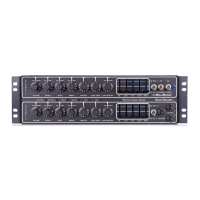
